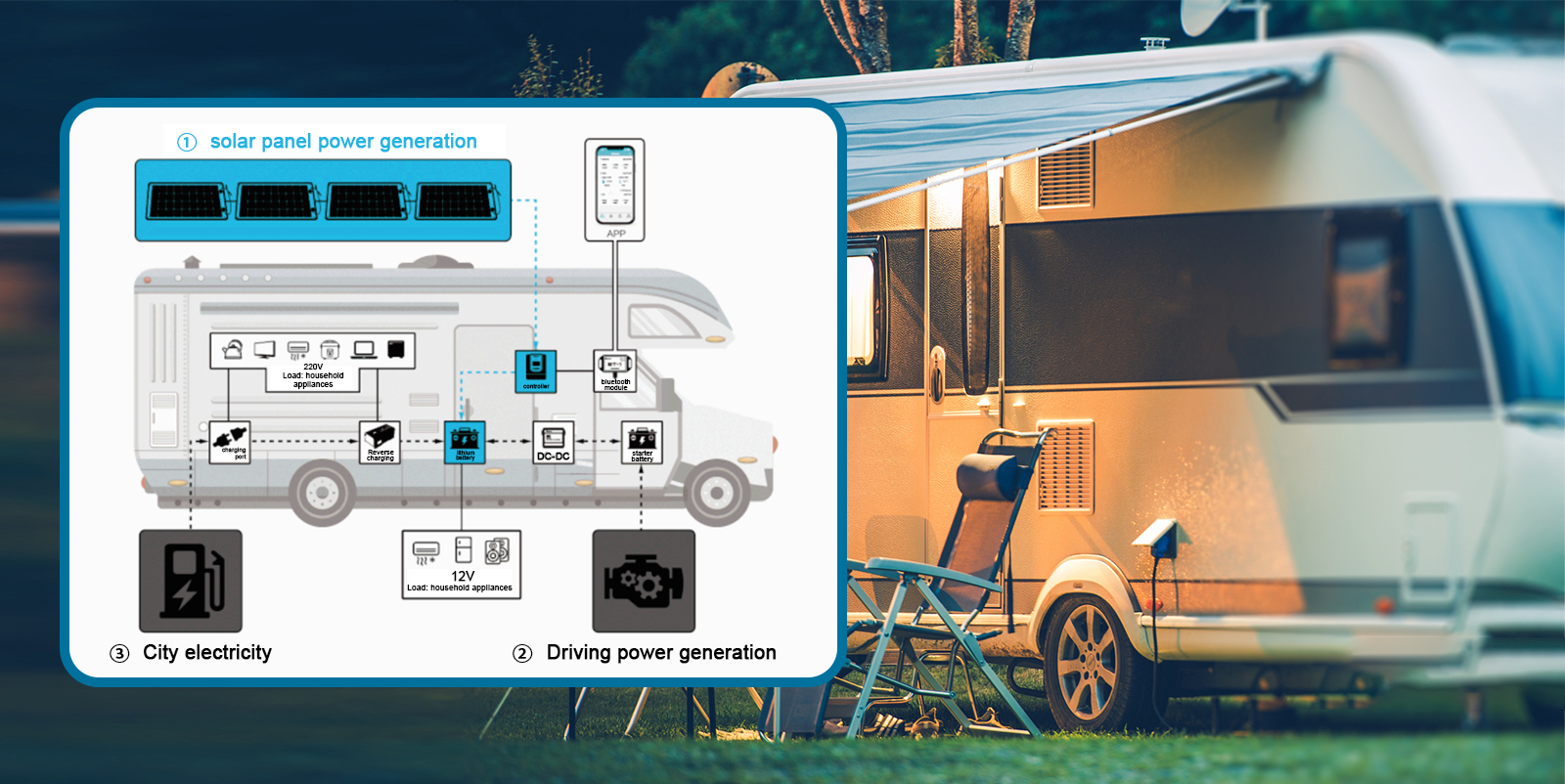Lead-acid batteries:
Lead-acid batteries are cheap but bulky and heavy, making them inconvenient to carry and not suitable for outdoor travel. If the average daily power consumption is around 8 kWh, at least eight 100Ah lead-acid batteries are needed. Generally, a 100Ah lead-acid battery weighs 30KG, and 8 pieces are 240KG, which is about the weight of 3 adults. Moreover, the service life of lead-acid batteries is short, and the storage rate will become lower and lower, so riders often need to replace new batteries, which is not so cost-effective in the long run.
lithium battery:
Lithium batteries are commonly divided into two types, lithium iron phosphate and ternary lithium. Then why are most RV batteries on the market made of lithium iron phosphate? Is ternary lithium inferior to lithium iron phosphate?
In fact, the ternary lithium battery also has its advantages, high energy density, and is the first choice for the power lithium battery of small passenger cars. The higher the energy density, the longer the cruising range, which is more in line with the usage scenarios of electric vehicles.

Lithium iron phosphate VS ternary lithium
The battery on the RV is different from that of an electric car. The needs of car users are frequent charging and discharging, and the power supply must be safe. Therefore, the advantages of long cycle life and high safety make lithium iron phosphate the first choice in the power consumption scenario of RVs. The energy density of lithium iron phosphate is lower than that of ternary lithium, but its cycle life is much higher than that of ternary lithium, and it is also safer than ternary lithium.
Lithium iron phosphate has stable chemical properties and good high temperature stability. It will only start to decompose at 700-800°C, and it will not release oxygen molecules in the face of impact, acupuncture, short circuit, etc., and will not produce violent combustion. High safety performance.
The thermal stability of ternary lithium battery is poor, and it will decompose at 250-300°C. When it encounters the flammable electrolyte and carbon material in the battery, it will catch on, and the heat generated will further aggravate the decomposition of the positive electrode, and it will be broken in a very short time. Deflagration.
Post time: Jan-17-2023



